ODQ
Synonym(s):1H-[1,2,4]Oxadiazolo[4,3-a]quinoxalin-1-one;ODQ;ODQ - CAS 41443-28-1 - Calbiochem
- CAS NO.:41443-28-1
- Empirical Formula: C9H5N3O2
- Molecular Weight: 187.15
- MDL number: MFCD00792620
- SAFETY DATA SHEET (SDS)
- Update Date: 2024-11-19 20:33:22
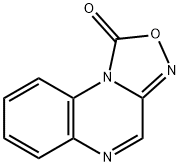
What is ODQ?
Description
ODQ (41443-28-1) is a potent and selective inhibitor of soluble guanylyl cyclase (sGC),?IC50?= 20 nM).1 ODQ acts via competition with NO for the heme site of sGC where it binds irreversibly.2?ODQ does not inhibit NO-mediated macrophage toxicity, an activity that is unrelated to cGMP nor does it inhibit particulate GC.1?ODQ is an extremely useful tool to explore the involvement of the NO-cGMP pathway in cellular signaling and physiologic processes.3-5
Chemical properties
ODQ is off-white to yellow powder
The Uses of ODQ
ODQ is a selective and potent sGC (soluble guanylyl cyclase) inhibitor.
The Uses of ODQ
1H-[1,2,4]oxadiazolo[4,3-a]quinoxalin-1-one inhibits neurite outgrowth and causes neurite retraction in PC12 cells independently of soluble guanylyl cyclase.
What are the applications of Application
ODQ is a selective and potent sGC (soluble guanylyl cyclase) inhibitor
Definition
ChEBI: 1H-[1,2,4]oxadiazolo[4,3-a]quinoxalin-1-one is a member of the class of oxadiazoloquinoxalines that is 1H-[1,2,4]oxadiazolo[4,3-a]quinoxaline substituted at position 1 by an oxo group. It has a role as an EC 4.6.1.2 (guanylate cyclase) inhibitor.
Biological Activity
ODQ is a potent and selective inhibitor of NO-sensitive guanylyl cyclase.
Biochem/physiol Actions
H-[1,2,4]Oxadiazolo[4,3-a]quinoxalin-1-one (ODQ) non competitively inhibits the action of nitric oxide-sensitive guanylyl cyclase and results in a supposedly irreversible oxidation of the prosthetic heme group. ODQ has been used to study the role of cyclic guanosine monophosphate (cGMP) pathway in nitric oxide (NO) signal transduction.
storage
+4°C
References
1) Garthwaite?et al.?(1995),?Potent and Selective Inhibition of Nitric Oxide-sensitive Guanylyl Cyclase by 1H-[1,2,4]Oxadiazolo[4,3-a]quinoxalin-1-one; Mol. Pharmacol.?48?184 2) Schrammel?et al.?(1996),?Characterization of 1H-[1,2,4]oxadiazolo[4,3-a]quinoxalin-1-one as a heme-site inhibitor of nitric oxide-sensitive guanylyl cyclase; Mol. Pharmacol.?50?1 3) Estevez?et al.?(1998),?Nitric oxide-dependent production of cGMP supports the survival of rat embryonic motor neurons cultured with brain-derived neurotrophic factor; J. Neurosci.?18?3708 4) Vandecasteele?et al.?(1998),?Role of the NO-cGMP in the muscarinic regulation of the L-type Ca2+ current in human atrial myocytes; J. Physiol.?506?653 5) Martins-Pinge?et al.?(1999),?Nitric oxide-dependent guanylyl cyclase participates in the glutamatergic neurotransmission within the rostral ventrolateral medulla of awake rats;?Hypertension?34?748
Properties of ODQ
| Melting point: | 160-170 °C |
| Boiling point: | 321.89°C (rough estimate) |
| Density | 1.3753 (rough estimate) |
| RTECS | RO0913150 |
| refractive index | 1.6500 (estimate) |
| storage temp. | 2-8°C |
| solubility | ethanol: 1.2 mg/mL |
| form | powder |
| pka | 0.94±0.20(Predicted) |
| color | pale yellow |
| Stability: | Stable for 2 years from date of purchase as supplied. Solutions in DMSO may be stored at -20° for up to 3 months. |
| CAS DataBase Reference | 41443-28-1(CAS DataBase Reference) |
Safety information for ODQ
| Signal word | Warning |
| Pictogram(s) |
 Exclamation Mark Irritant GHS07 |
| GHS Hazard Statements |
H315:Skin corrosion/irritation H319:Serious eye damage/eye irritation H335:Specific target organ toxicity, single exposure;Respiratory tract irritation |
| Precautionary Statement Codes |
P261:Avoid breathing dust/fume/gas/mist/vapours/spray. P304+P340:IF INHALED: Remove victim to fresh air and Keep at rest in a position comfortable for breathing. P305+P351+P338:IF IN EYES: Rinse cautiously with water for several minutes. Remove contact lenses, if present and easy to do. Continuerinsing. P405:Store locked up. |
Computed Descriptors for ODQ
New Products
Tert-butyl bis(2-chloroethyl)carbamate 4-Methylphenylacetic acid N-Boc-D-alaninol N-BOC-D/L-ALANINOL N-octanoyl benzotriazole 3-Morpholino-1-(4-nitrophenyl)-5,6-dihydropyridin- 2(1H)-one Furan-2,5-Dicarboxylic Acid DIETHYL AMINOMALONATE HYDROCHLORIDE 1,1’-CARBONYLDIIMIDAZOLE R-2-BENZYLOXY PROPIONIC ACID 1,1’-CARBONYLDI (1,2-4 TRIAZOLE) N-METHYL INDAZOLE-3-CARBOXYLIC ACID (2-Hydroxyphenyl)acetonitrile 4-Bromopyrazole 5-BROMO-2CYANO PYRIDINE 5,6-Dimethoxyindanone 5-broMo-2-chloro-N-cyclopentylpyriMidin-4-aMine 2-(Cyanocyclohexyl)acetic acid 4-methoxy-3,5-dinitropyridine 1-(4-(aminomethyl)benzyl)urea hydrochloride 2-aminopropyl benzoate hydrochloride diethyl 2-(2-((tertbutoxycarbonyl)amino) ethyl)malonate tert-butyl 4- (ureidomethyl)benzylcarbamate Ethyl-2-chloro((4-methoxyphenyl)hydrazono)acetateRelated products of tetrahydrofuran
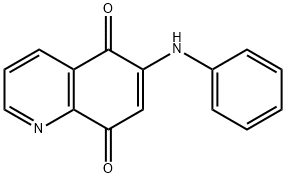
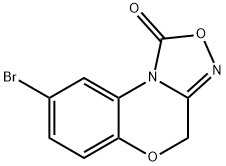
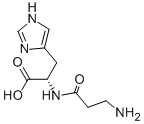
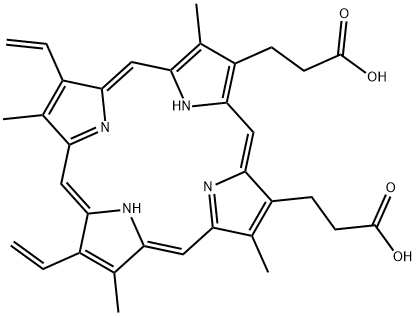
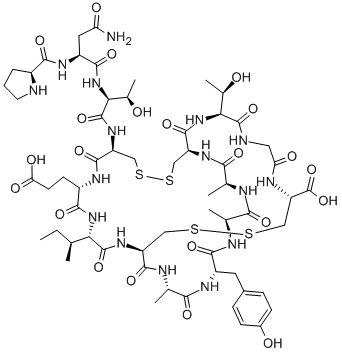
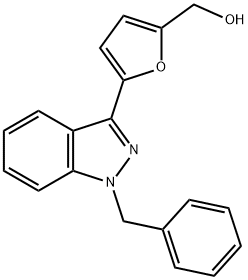
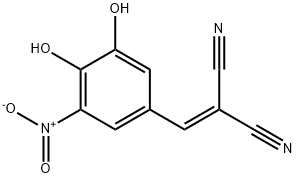
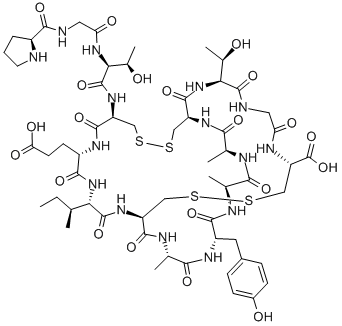
You may like
-
![1H-[1,2,4]Oxadiazolo[4,3-a]quinoxalin-1-one CAS 41443-28-1](https://img.chemicalbook.in//Content/image/CP5.jpg) 1H-[1,2,4]Oxadiazolo[4,3-a]quinoxalin-1-one CAS 41443-28-1View Details
1H-[1,2,4]Oxadiazolo[4,3-a]quinoxalin-1-one CAS 41443-28-1View Details
41443-28-1 -
![1H-[1,2,4]Oxadiazolo[4,3-a]quinoxalin-1-one CAS 41443-28-1](https://img.chemicalbook.in//Content/image/CP5.jpg) 1H-[1,2,4]Oxadiazolo[4,3-a]quinoxalin-1-one CAS 41443-28-1View Details
1H-[1,2,4]Oxadiazolo[4,3-a]quinoxalin-1-one CAS 41443-28-1View Details
41443-28-1 -
![1H-[1,2,4]Oxadiazolo[4,3-a]quinoxalin-1-one CAS 41443-28-1](https://img.chemicalbook.in//Content/image/CP5.jpg) 1H-[1,2,4]Oxadiazolo[4,3-a]quinoxalin-1-one CAS 41443-28-1View Details
1H-[1,2,4]Oxadiazolo[4,3-a]quinoxalin-1-one CAS 41443-28-1View Details
41443-28-1 -
 ODQ CAS 41443-28-1View Details
ODQ CAS 41443-28-1View Details
41443-28-1 -
 1975-50-4 98%View Details
1975-50-4 98%View Details
1975-50-4 -
 14714-50-2 (2-Hydroxyphenyl)acetonitrile 98+View Details
14714-50-2 (2-Hydroxyphenyl)acetonitrile 98+View Details
14714-50-2 -
 118753-70-1 98+View Details
118753-70-1 98+View Details
118753-70-1 -
 733039-20-8 5-broMo-2-chloro-N-cyclopentylpyriMidin-4-aMine 98+View Details
733039-20-8 5-broMo-2-chloro-N-cyclopentylpyriMidin-4-aMine 98+View Details
733039-20-8